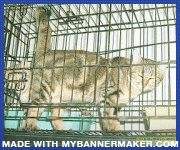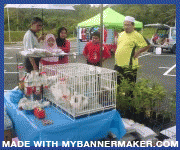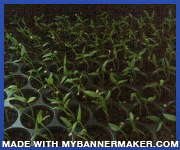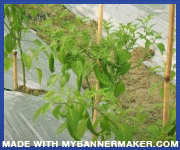by Alexandra Logsdon in consultation with Dr. Ann McDowell, DVM
Most people think that rabbit pellets were especially formulated for their pet rabbit, but this is not the case. Pellets were originally formulated as a convenient and economical way to promote quick growth and weight gain in commercial rabbits raised for food and fur. Our rabbits are our friends and companions and we want them to live long, healthy lives. This is why it is crucial that we learn about and understand their dietary needs.
Rabbits have a unique and delicate digestive system and it is important to take this into consideration when planning their meals. It is a system that is designed to take both energy and nutrients from food that is low in both, so providing a rabbit with a high fat/high protein, low fiber diet (pellets alone, for example) is a sure ticket to bad health and even a shortened life span. A healthy rabbit who is spayed or neutered, gets a proper diet and lives inside the home as a part of the family has a life span of eight to thirteen years.
Rabbit Digestion
Digestion begins in the mouth. The food is mashed up by the teeth and mixed with saliva, which contains proteins that begin breaking down the food. When the food is swallowed it enters the stomach where it is mixed with stomach acid and digestive enzymes, which continue the digestion process. It then moves out of the stomach into the small intestine where nutrients are absorbed into the body, and then it continues on into the large intestine where the food particles are sorted by size. The larger particles of indigestible fiber drive the smaller fragments of digestible fiber backwards into the cecum, which is a large blind-ended sac located at the junction of the small and large intestines. The indigestible particles are then passed out in the fecal pellets (regular poop) and the cecum begins the fermentation process that will produce what is commonly referred to as night feces or cecotropes, which a rabbit will ingest directly from the anus. You can tell the difference between normal feces and cecotrophes by their soft, shiny clumped texture and often more pungent odor.
A rabbit's cecum maintains a delicate mix of protozoa, yeast and good bacteria, which is crucial to keeping your rabbit healthy. If something upsets the delicate bacterial balance (such as stress; some oral antibiotics such as penicillin & related drugs; a high fat, low fiber diet; too many carbohydrates, etc.), bad bacteria will begin to grow. These bad bacteria produce toxins that can be harmful or fatal to your rabbit. On the other hand, the products of good cecal fermentation are crucial to healthy gut flora, because through coprophagy, the oral re-ingestion of the cecal pellets produced by this fermentation process, the rabbit can absorb by normal digestion the special nutrients and vitamins contained in the cecal pellets. Some evidence suggests that bacteria from these [re-ingested] cecal pellets help the food digest while in the stomach (Laura Tessmer, B.Sc. and Susan Smith, Ph.D: Rabbit Nutrition 1998).
The Importance of Fiber and a Proper Diet
When your rabbit is fed an improper diet that is, one that does not contain an adequate amount of [indigestible] fiber or one that is too high in carbohydrates the Gastro-Intestinal (GI) tract cannot function properly and it begins to shut down, causing various degrees of what is called GI stasis. GI stasis, if not taken care of immediately, can cause your rabbit to die a very painful death.
So what is GI stasis really? When the speed with which material moves through the GIT is altered it can affect how quickly the stomach and cecum empty. When this happens we often see a dramatic decrease in the rabbit's appetite for both food and water, which only furthers the problem: The body still needs water to function so it takes it from the stomach and cecum, causing the contents of the entire GI tract (food, hair from grooming, etc.) to become further dehydrated and impacted. The bunny is then unable to pass the mass of food/hair in the stomach, feels full, uncomfortable and often gassy (due to the build-up of the bad bacteria in the cecum), which only adds to his "I don't want to eat" mentality! A rabbit in GI stasis will often stop eating, become anorexic and die. When a rabbit dies from GI stasis and its related problems it is most often due to hepatic lipidosis or Fatty Liver Disease, which is caused by the toxins produced by the bad bacteria in the cecum.
In most cases, especially those caught early-on by observant owners, GI stasis can be reversed with time, patience and good advice from your rabbit vet. But our goal is to prevent it from happening at all.
How Will I Know if My Rabbit is Having Problems?
Check the feces while cleaning the litter box. A rabbit's feces should be plentiful, round like peas and of a uniform size and shape. No feces or a lot fewer than usual, misshapen feces, or those strung together with hair ("pearls") may mean bunny needs to see a vet. If giving your rabbit hairball remedy (malt flavored, the same used for cats) one inch once or twice a day for three days doesn't clear up the problem, or if bunny stops eating or drinking or is in pain consult a vet immediately. If there are no feces for 12-24 hours contact your vet immediately. Never give babies under six months old hairball remedy without first consulting your rabbit vet.
While the use of hairball remedies as preventatives can be helpful, there is some question as to how helpful or harmful it is to administer them to rabbits already in GI stasis. If the intestinal contents are severely dehydrated and brick-hard (yes, we have seen this!), a coating of vaseline-like substance over them may merely impede their re-hydration and make it more difficult for the mass to break up and begin passing. For this reason, it is probably wise to concentrate on re-hydrating the intestinal contents before using petroleum-based laxatives, if they are to be used at all (Krempels, Dana M., PhD and Kelleher, Susan, DVM. GastroIntestinal Stasis, The Silent Killer. 1997.). And again, if your rabbit is experiencing GI stasis s/he needs to be seen by a good rabbit vet right away.
At Zooh Corner, we generally administer one inch of hairball remedy once or twice a week as a preventative measure; during a heavy shed we may offer a rabbit a bit more, and we sometimes increase the daily greens ration a bit and/or rinse the produce directly before serving it in order to get more water into the bunny's system. This, in addition to a proper diet and plenty of fun and exercise, as well as close observation of the litter box and the general behavior and condition of the rabbits goes a long away towards keeping bunny GI tracts healthy and happy.
Please take note: This situation, GI Stasis, is often misdiagnosed as "a hairball." And while the rabbit may indeed have a hair/food mass in his stomach, it is in fact a result of GI stasis, not the cause. Vet intervention is always called for when this sort of situation presents itself. Not all vets know and see rabbits, however, so it is important that you locate a good rabbit vet in your area before an emergency arises. Your rabbit-savvy vet will be able to examine your pet and tell you whether it is indeed GI stasis, or if there is an obstruction of some sort and s/he will then be able to present you with the proper course of action.
Prevention is Definitely Worth a Pound of Cure: The Basic Rabbit Diet
Pellets and Hay: For rabbits under one year old free feed (as much as they want) a fresh, plain, high fiber (18-20%), mid-range protein (14% - 16%) pellet. Adult rabbits should get 1/4 cup of low protein (10% or lower), high fiber pellets PER DAY, per five (5) pounds of optimum* body weight. If you have a rabbit that is difficult to keep weight on or off, consult your vet. Do not feed your rabbit any of the many commercial pellet mixes that contain seeds, dried fruit or colored cereals. These commercial treat foods are geared to look pleasing to us humans, but they are definitely not in the best health interests of your pet rabbit. Rabbits are not seed, fruit or cereal eaters by nature and these types of junk foods are high in sugars and carbohydrates, which as we talked about earlier can lead to an overgrowth of bad bacteria.
Hay is the most important factor in your rabbit's diet. It is his prime source of fiber, which is instrumental in keeping the gut in good working order. Hay has the added benefits of being good entertainment for your bunny, they love to rearrange it, dig it up and place it "just so," as well as a great source of chewing material which is necessary to keeping the teeth healthy. A rabbit's teeth grow continuously throughout his life and it is essential that we provide them with safe chewing materials such as hay and wooden chew toys to help keep them filed down. A rabbit with tooth problems is a rabbit on his way to having GI problems as well. Fresh timothy, oat and other grass hays should be available to all bunnies all the time. Alfalfa hay, which is higher in calories as well as calcium (which can cause kidney or bladder problems(sludge) in older rabbits) is okay to feed to physically fit bunnies under the age of one, but should be avoided for the average healthy, mature house rabbit. On the other hand, feeding alfalfa to younger bunnies may make it more difficult to switch over to the lower protein/calcium grass hays when they get older. We start all bunnies off with the grass hays; as they are getting a healthy alfalfa-based pellet, we don't feel the alfalfa hay is needed. Some rabbits have higher protein needs (older or sick rabbits, angoras, etc.) and may also need the alfalfa hay. Again, consult your vet with all special dietary questions. At Zooh Corner we feed a mixture of oat and timothy hay, as well as orchard grass and our seasonal "ZoohMix" (a blend of oat, wheat and barley hays) to bunnies of all ages, unless they are on special, vet prescribed diets. We feel that a variety of tastes encourages the bunnies to eat more hay, and the variety of nutrients may be beneficial. Certainly no harm is done! Anything to encourage more fiber consumption!
It is best to avoid purchasing pellets and hays from grocery stores and pet store chains, as the feed can sit on the shelves or in storage for months, which makes it stale and lacking in proper nutrient values. You can usually purchase good quality pellets (OxBow, Purina High Fiber…) and hays from local feed stores, or online from our store. Some rabbit vets also sell high quality pellets, and often, local rabbit rescues will sell hays and pellets to help supplement the high costs of rescue (what we do).
Vegetables and Fruit: It is important to feed your rabbit a daily variety of fresh vegetables to help balance out the nutritional needs in his diet. Feed two to four cups of fresh vegetables for each five pounds of optimum body weight. All vegetables should be fresh, washed and organic whenever possible. (Note: Carrot tops & radish tops should be organic. Humans do not generally consume the tops of these vegetables, so little consideration is given to what pesticides are sprayed on them and they could be very dangerous or fatal to your rabbit.) To make sure your rabbit gets the necessary nutrients offer him at least three different vegetables daily (from our list of vegetables and fruits at the bottom of this page) and make sure one or more contain Vitamin A (noted with *).
While you may occasionally feed your rabbit a bit of fruit, it is extremely important that you limit their intake to no more than one or two tablespoons of high fiber fruits (pears, apples, tomatoes...) per five pounds of optimum body weight, one or two times a week . Never give fruit to dieting bunnies. Too much sugar can make your bunny fat, because excess energy (a by-product of sugar consumption) is converted to - fat!
Feeding your rabbit a limited amount of high fiber pellets, abundant fresh grass hays and a daily assortment of fresh vegetables is a key factor in keeping your rabbit healthy. Keep in mind that time balance is just as important to your rabbit's diet as is nutritional balance. It is important to divide the pellets and vegetables between the morning and evening meals, while having hay and fresh water available at all times. And remember, exercise is just as important as diet in keeping the rabbit [gut] functioning and healthy. A rabbit should get a minimum of 3 - 5 hours out of cage exercise every day. Take all dietary changes slowly. Quick changes to the diet can cause diarrhea or an overgrowth of that bad bacteria in the gut. Also keep in mind that different rabbits have different dietary needs. Younger rabbits, elderly rabbits, smaller breeds such as the Netherlands Dwarf, large breeds like the Flemish Giant and long haired rabbits all have different needs and you should consult your Rabbit Vet for more specific information.
*Optimum body weight is how much your rabbit should weigh, not always how much she does weigh.
VEGETABLES (AND FRUITS) THAT ARE GOOD FOR YOUR BUNNY
| VEGETABLES | FRUIT |
| NOTE: At least three different vegetables a day are recommended - any combination of lettuces counts as ONE veggie for that day) Alfalfa, Radish And Clover Sprouts | NOTE: Feed only once or twice a week in small amounts - NO seeds or pits! Sugary fruits, such as bananas and grapes should be fed only as occasional treats, and NO fruit should be fed to rabbits who are overweight. Apple |
NO GRAINS, LEGUMES OR NUTS! These are not natural foods for rabbits and they can be very dangerous to gut function.
1 Good source of vitamin A, feed at least one daily
2 Some bunnies may find this a rather "gassy" veggie. If diarrhea occurs, remove from diet.
3 These veggies are higher in calcium, use sparingly, once or twice a week. For older buns, or those with bladder or kidney problems, avoid, unless otherwise directed by your rabbit vet.
4 High in either oxalates or goitrogens, which can cause or exacerbate sludging, and other calcium/kidney problems. Use sparingly!
References
- Cheeke, Peter R. Rabbit Feeding and Nutrition. Orlando: Academic Press, 1987.
- Jenkins, Jeffrey R., DVM. Feeding Recommendations for the House Rabbit. The Veterinary Clinics of North America, 1999.
- Krempels, Dana M., PhD. GastroIntestinal Stasis, The Silent Killer. 1997.
- Brown, Susan, DVM. Sluggish Motility in the Gastrointestinal Tract. Hand-out. Midwest Bird and Exotic Animal Hospital, Westchester, Ill.
I would also like to thank the House Rabbit Society for their invaluable contributions to rabbit veterinary medicine, as well as for their endless information on general rabbit care.

























































